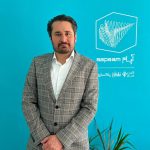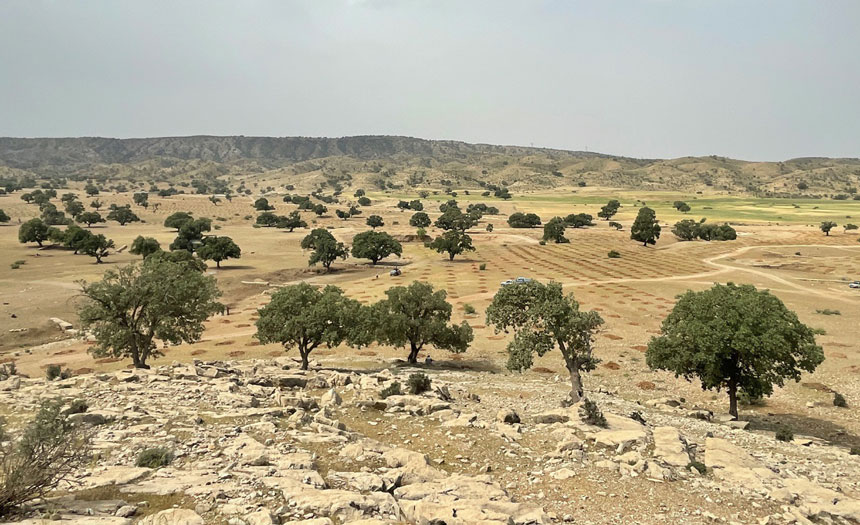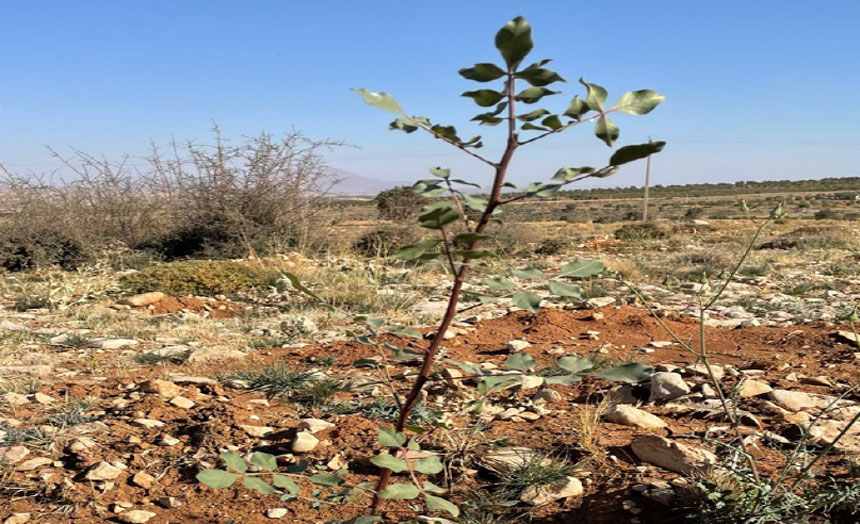By:Ghazal Mostafa
 Amin Shojaie was born in Tehran in 1986. Amin is an artist exploring the relationship between nature and human beings. He introduced the idea of “artist as gardener” to underscore the role of the artist in restoring balance to this relationship. He has been researching, producing and showcasing his work with trees and plants as life-giving elements and fungal biomaterial in different exhibitions and his platform named Neuro-vironment since 2009.
Amin Shojaie was born in Tehran in 1986. Amin is an artist exploring the relationship between nature and human beings. He introduced the idea of “artist as gardener” to underscore the role of the artist in restoring balance to this relationship. He has been researching, producing and showcasing his work with trees and plants as life-giving elements and fungal biomaterial in different exhibitions and his platform named Neuro-vironment since 2009.
How does environmental art engage with your personal practice as an artist? Would you let us to know more about your artist run platform?
Personally, as an artist i focus on the relationship between humans and nature, am attracted to a kind of art that can repair the structure of this damaged network and this is my big project in my platform named “neuro-vironment” I work on different perspectives of this relation from design aspects of my paintings and designs to biological aspect of my living artworks and spatial aspects in my installations.
“Neuro-vironment” is an artist run platform for re-defining the relation between human and land. I use multidisciplinary science and art to create environmental art projects for making realistic steps to redefine the ecosystem. My current Art project moves between disciplines of philosophy, satellite data mapping, climate change, reforestation and ecology.
The project is about forestation of 10 million trees in Iran has been started as a long term project with multi-disciplinary approach to increase carbon stock and help saving the planet via establishing a company for this project with collaboration of Arash Asadi as co-founder.
This biological fabric is an interwoven network which links an array of lives and thoughts; however, humans have destroyed its biological essence by dismantling parts of this mesh.
How can the artist mend this torn mesh and reactivate the biological layers? In this platform, the relationship between framework and surroundings and the way the life can lead to action and interaction. Audiences of this article can explore more from artworks on: www. aminshojaei.com point via annual CO2 assessment and compensation. We have created a way to make a link between businesses and the environment. This is a crucial desire of our earth that is over-heated because
there are no regulations prompting industries to control and compensate for their emissions. We have had about 40 customers in the last two years. we gained all these success stories with team work and leadership of our board and management of Aapaam cofounder Mr. Arash Asadi.
Please tell our readers about Aapaam, what it does, its mission, main goal and how it started.
Aapaam is a startup who is active in the field of carbon compensation via reforestation ,afforestation s and green projects, in which we care for our projects in a long-term.
Our mission is to help earth balance its CO2 level which is an important global warming indicator. Our service can be regarded as a long-time journey, customers enter to a Net-Zero journey and we lead them to Net-Zero.
Where is Iran’s place, environmentally, in the global climate change?
Iran is the 6th largest emitter of CO2, close to Germany which is a major industrial country. We produce 690 million tons of pollutants, that is 7.3 tons per person annually. This is critical times, because the global temperature is projected to rise by 2.8 degrees by the end of the present century, which very far from the Paris agreement target on 1.5 degrees by 2030. To do this, all countries must reduce their carbon footprint by 45%, otherwise life on earth may face extinction and a large part of trees and wildlife will disappear.
Russia has plans to halt its export of timber and we may have lack of cellulose resources. Now adays the government wants to plant 1 billion trees, comprehensive research is required to determine the resources needed and the lands for these projects. Although the sources of funding for the project are still unclear, leveraging carbon taxes can be a funding solution for it. Attempts are being made for Iran to joins FATF, after which we will have to comply with carbon tax laws. we think implementation of carbon tax is a great step forward to realization of urgent situation for our earth and our country.
How does Aapaam come around doing its mission? Tell us about Aapaam’s forestry projects.
We have planted a total of 22 thousand trees. During our first project we managed to plant 4500 trees to form a Hyrcanian forest in the vicinity of Pardis Hospital and University and fenced the area to prevent grazing. We planted another 11,000 trees in Zagros region (Haft Barm area) as well as 6500 trees in Noorabad Mamasani. In All of our projects we have contract with Natural resources organization for the land in which we plant.
How do you help companies and organizations to reduce their carbon footprints?
A questionnaire is used to assess the different carbon production processes such as human resources, ventilation systems, data servers and etc. so that we can provide them with an annual path that leads them to the zero-carbon level. The carbon production records and increases are measured throughout our program.
How is lowering the carbon footprint important for businesses? How can businesses measure their work in this area?
In today’s world, businesses need more values in their products to be competitive in market. There is increasing emphasis and mainstream awareness of the effect businesses have on the environment and ensuring they pay their carbon doubt to the environment.
Corporations purchase carbon credits from carbon markets after their carbon production is measured and they go through financial evaluations. They can mitigate their effect on the environment through green projects or by lowering their greenhouse gasses production.
People themselves can also measure their carbon emissions using our databases and our measurement method, which follows UN standards.
How does cultural activities fit in with Aapaam’s mission? Where do art and creative practices come in to engage the industry and people?
Aapaam is a start-up that works in close connection with natural heritage. In afforestation projects, we engage the locals in dialogue and raise awareness of how they can protect forests and improve their environment. We do support some projects which will be revealed in future targeting this concept.
How do you see the outlook of ESG in Iran?
Although there has been great support for change, we still have a long way to go. Great effort is needed to develop all the three aspects of environmental, social and governmental engagement.
The most important government intervention would be an obligatory carbon tax for industries, businesses and energy providing companies.
There are currently not enough guidelines regulating the practices of businesses like mineral water packaging companies, and their impacts on the environment. The environmental aspect compels businesses to involve locals in planting and caring for trees.





